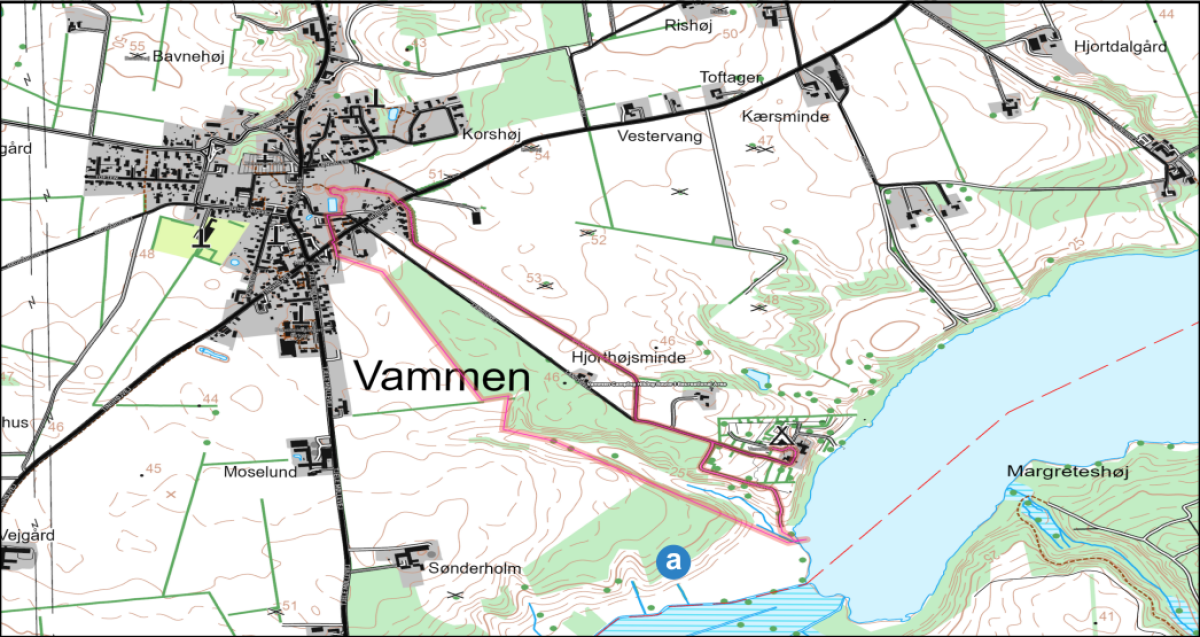Length: 4.1 km
An atmospheric hike through the recreational area of Tjele Langsø, where nature and cultural history merge. Discover the traces of old cave roads, the sheep in the meadows and the rare May Cuckoowort – all just a short walk from the campsite.
From the campsite, walk up the paved road towards Vammen. Turn left at the “Recreational area” sign (just before the camping flagpole).
Follow the red-marked posts for the rest of the hike. You come down to Tjele Langsø – note the old hollow road, which can still be seen running southwest across the meadows as a slight rise in the terrain. This was the main road to Tjele Estate. This is where the farmers from Vammen and the surrounding area drove and walked when they went to work on the Tjele Estate.
In May/June, the rare and protected May Cuckoowort blooms in the damp area right down by the lakeshore. Walk through the fenced area with sheep that a sheep guild in Vammen keeps here to graze the area.
Follow the red poles all the way to the yellow funky house, where the path turns slightly left. Follow the gravel road towards Hobrovej and on your right you’ll see a small red brick house: the former communal cold store from the 1950s. Here, residents from Vammen and the surrounding area shared a large cold store to freeze meat and other foods. During the 1970s, many got private chest freezers, and there are now almost none of the over 3,000 communal freezer houses left in Denmark.
Turn right onto Hobrovej and after about 200 meters turn right onto Langsøvej, which ends at the campsite.
a) Hoveri was a service that, as part of the annual payment, had to be “paid” in the form of days of work that a tenant (tenant farmer or husbandman) had to perform on or for the estate to which his farm belonged. Here, Tjele Manor.
Being a tenant farmer or copyholder meant that you ‘rented’ a property with land from a landowner. The landowner could be a private person or the king. You could live in the house or on the farm and cultivate the land in exchange for a fee (a tax paid to take over a copyhold property) and land guild (a fixed annual tax in kind and also money for the owner of the copyhold farm) and to provide serfdom (for the owner of the copyhold property).
Hovery was abolished in 1772, but not until around 1850 did it cease completely.



